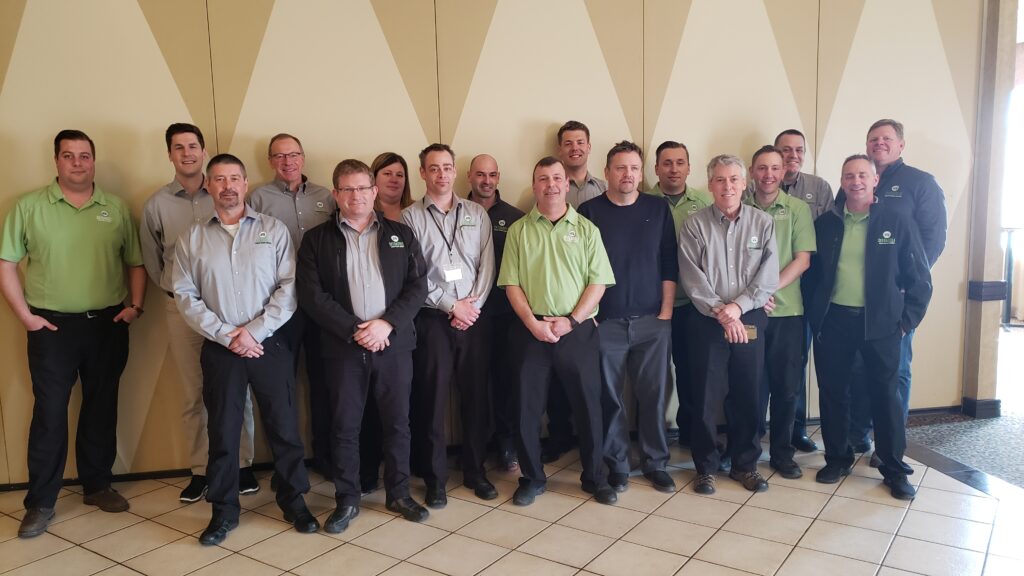There is nothing stronger than a mother’s love and it is no surprise that mothers will go to great lengths to protect their babies. This does not just apply to people, it applies to animals as well and that is why raccoon removal where babies are involved is both exciting and challenging for the technicians at Skedaddle Humane Wildlife Control. Babies change the dynamic entirely, but the successful relocation of a raccoon family is extremely satisfying for both the Skedaddle technician and the homeowner.
Earliest ever start to the baby season for Skedaddle Technicians
According to Skedaddle Technician, Chris Stevens, “Baby season is generally in spring when raccoons, squirrels, skunks, and birds give birth and we need to take a much more “hands-on” approach to remove them during this time.”
In fact, the removal of wildlife babies from homes in the spring is so common that, besides regular training, at the end of winter all Skedaddle Technicians receive a refresher course. This annual “spring tune-up” training is critical to brush up on their skills for safely removing babies from chimneys, attics, roofs, basements, crawl spaces, sheds and other parts of your home.

But this year is different. Even before the “spring tune-up” the Skedaddle crew had to remove their first litter of raccoon babies from a basement ceiling. It is very rare to have a raccoon family in your home so early in the year and according to Skedaddle employees, “this is the first time in 30 years that we have seen babies born this early. Usually, we don’t hear about babies until mid-March”.
When trouble moves into your home
As a homeowner, your problems start the moment a raccoon moves into your home. Just one raccoon can cause extensive damage, ripping up insulation to make a comfortable nest and contaminating your attic or basement with their urine and feces, but an entire family is an even bigger problem.
It is common for raccoons to mate in late winter, with a litter of one to seven kits being born in April and May. Occasionally, a raccoon will give birth in late spring or even early June, but this is quite rare. The gestation period of a raccoon is about nine weeks, giving the mother enough time to find a suitable place to build a cozy nest for her family if she doesn’t already have a good den site.
Newborn raccoons are blind and deaf for the first three weeks and are cared for exclusively by their mother. Your home is warm, secure and relatively safe from predators and any form of access is an invitation to move in. Young raccoons will remain with their mother through the first winter and she will pass on her knowledge and survival skills, teaching them how to forage and find shelter.
How Skedaddle handles raccoon removal
Skedaddle has nearly 30 years’ experience in the raccoon removal business and has the knowledge and expertise to safely and humanely remove them from your home. We have seen how raccoons with babies go to great lengths to hide and protect their young and often move the babies around the attic while the technicians are trying to locate and remove them.
Once we are sure that we have located and removed all the babies, we place them in a specially designed heated baby-box and take them outside where they are reunited with their mother. The mother will then safely remove the babies and relocate them to one of her alternative den sites nearby.
Humane removal is extremely important and by being hands-on we can ensure that the raccoon family remains safely together. This is important because if any babies are left behind in the attic, the mother raccoon will do her best to retrieve them and this can cause extensive damage to your home as she tries to gain access to the attic.
For the health and safety of your home and family, it is best to call in a wildlife controlexpert, like Skedaddle Humane Animal Control, the moment you suspect you have any uninvited guest in your home. According to Chris Stevens “Raccoon and squirrels are pretty much the same. Birds are easy because the parents don’t have the ability to relocate them and make it more challenging for us. Skunks almost always involve cutting a hole in a shed floor or removing deck boards.” A Skedaddle technician is trained to deal with any wildlife situation, and they have usually seen it all.


